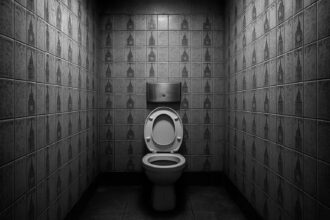Historic and recent abdications and title renunciations—from King Edward VIII in 1936 to Queen Margrethe II in 2024—highlight how personal decisions and changing societal expectations continue to transform the roles and status of European royals.
The British royal lineage experienced a dramatic turning point in 1936 when King Edward VIII chose to abdicate the throne to marry the American divorcée Wallis Simpson, an act that forever altered the course of the monarchy. Following his unprecedented decision, Edward was titled Duke of Windsor by his younger brother, King George VI, who ascended the throne, positioning the then-young Princess Elizabeth closer to eventual kingship. This abdication indirectly paved the way for Elizabeth to become the longest-serving British monarch. Yet, this was not the final instance of notable royal departures or title renunciations within European royalty.
Among the most prominent cases is that of Meghan Markle and Prince Harry, who in 2020 announced their decision to step back as senior working members of the Royal Family. The couple’s move from the UK to California, where they are raising their children, marked a significant shift in royal tradition, as they relinquished the right to use their HRH styles publicly, a concession reportedly agreed upon with Queen Elizabeth II. Despite stepping down, Prince Harry remains fifth in line to the throne.
The late Princess Diana, once married to Prince Charles, faced a different but somewhat parallel situation. Following their divorce, she lost the official title of Her Royal Highness yet retained several royal privileges, including an allowance, residence, and access to the royal aircraft. Diana’s status reflected a nuanced balance between her royal connections and personal independence until her untimely tragic death in 1997.
Prince Philip also notably gave up foreign titles before his marriage to Princess Elizabeth. To marry the future queen, he renounced his Greek and Danish royal titles, adopted the surname Mountbatten, and converted to Anglicanism, underscoring the complexities royal spouses often face in balancing personal heritage with British royal protocol. Notably, he never assumed the title of king, a role reserved uniquely within the British monarchy for consorts of queens.
Beyond the British royal family, Queen Margrethe II of Denmark’s recent abdication in January 2024 illustrates a modern monarch stepping down voluntarily due to health concerns after a reign spanning over five decades. Her son, King Frederik X, has since succeeded the throne. This event highlights the ongoing evolution of royal roles amid contemporary health and age considerations.
Finally, Prince Andrew’s resignation from public royal duties in 2019 amidst controversies linked to his association with Jeffrey Epstein represents another instance of a royal scaling back their official status. His decision, supported by Queen Elizabeth II, was framed as necessary to avoid disruption to the monarchy and its charitable engagements.
These diverse episodes underscore the fluidity and personal dimensions inherent in royal titles and duties, shaped by love, scandal, health, and evolving societal expectations.
 Reference Map:
Reference Map:
- Paragraph 1 – [1], [4]
- Paragraph 2 – [1], [2], [3], [4]
- Paragraph 3 – [1], [3], [4]
- Paragraph 4 – [1], [4], [5]
- Paragraph 5 – [1], [4], [6]
- Paragraph 6 – [1], [4], [7]
Source: Noah Wire Services
- https://www.express.co.uk/news/royal/2082669/full-list-royals-abdicated-gave-up-titles – Please view link – unable to able to access data
- https://www.express.co.uk/news/royal/2082669/full-list-royals-abdicated-gave-up-titles – This article discusses six royals who have abdicated or given up their titles, including the Duke and Duchess of Windsor, Meghan and Harry, Princess Diana, Prince Philip, Queen Margrethe II of Denmark, and Prince Andrew. It provides details on their decisions and the circumstances surrounding them.
- https://www.express.co.uk/news/royal/2082669/full-list-royals-abdicated-gave-up-titles – This article discusses six royals who have abdicated or given up their titles, including the Duke and Duchess of Windsor, Meghan and Harry, Princess Diana, Prince Philip, Queen Margrethe II of Denmark, and Prince Andrew. It provides details on their decisions and the circumstances surrounding them.
- https://www.express.co.uk/news/royal/2082669/full-list-royals-abdicated-gave-up-titles – This article discusses six royals who have abdicated or given up their titles, including the Duke and Duchess of Windsor, Meghan and Harry, Princess Diana, Prince Philip, Queen Margrethe II of Denmark, and Prince Andrew. It provides details on their decisions and the circumstances surrounding them.
- https://www.express.co.uk/news/royal/2082669/full-list-royals-abdicated-gave-up-titles – This article discusses six royals who have abdicated or given up their titles, including the Duke and Duchess of Windsor, Meghan and Harry, Princess Diana, Prince Philip, Queen Margrethe II of Denmark, and Prince Andrew. It provides details on their decisions and the circumstances surrounding them.
- https://www.express.co.uk/news/royal/2082669/full-list-royals-abdicated-gave-up-titles – This article discusses six royals who have abdicated or given up their titles, including the Duke and Duchess of Windsor, Meghan and Harry, Princess Diana, Prince Philip, Queen Margrethe II of Denmark, and Prince Andrew. It provides details on their decisions and the circumstances surrounding them.
- https://www.express.co.uk/news/royal/2082669/full-list-royals-abdicated-gave-up-titles – This article discusses six royals who have abdicated or given up their titles, including the Duke and Duchess of Windsor, Meghan and Harry, Princess Diana, Prince Philip, Queen Margrethe II of Denmark, and Prince Andrew. It provides details on their decisions and the circumstances surrounding them.
Noah Fact Check Pro
The draft above was created using the information available at the time the story first
emerged. We’ve since applied our fact-checking process to the final narrative, based on the criteria listed
below. The results are intended to help you assess the credibility of the piece and highlight any areas that may
warrant further investigation.
Freshness check
Score:
3
Notes:
 The narrative includes well-known historical events, such as King Edward VIII’s abdication in 1936 and Meghan Markle and Prince Harry’s decision in 2020. These events have been extensively covered in reputable sources like TIME magazine ([time.com](https://time.com/5037780/prince-harry-meghan-markle-engaged-wallis-simpson/?utm_source=openai)) and History.com ([history.com](https://www.history.com/this-day-in-history/december-11/edward-viii-abdicates?utm_source=openai)). The inclusion of Queen Margrethe II’s abdication in January 2024 adds a recent element, but the overall content appears to be recycled from previous reports.
The narrative includes well-known historical events, such as King Edward VIII’s abdication in 1936 and Meghan Markle and Prince Harry’s decision in 2020. These events have been extensively covered in reputable sources like TIME magazine ([time.com](https://time.com/5037780/prince-harry-meghan-markle-engaged-wallis-simpson/?utm_source=openai)) and History.com ([history.com](https://www.history.com/this-day-in-history/december-11/edward-viii-abdicates?utm_source=openai)). The inclusion of Queen Margrethe II’s abdication in January 2024 adds a recent element, but the overall content appears to be recycled from previous reports.
Quotes check
Score:
4
Notes:
 The direct quote from King Edward VIII’s abdication speech, “I have found it impossible to carry on the heavy burden of responsibility and to discharge my duties as king, as I would wish to do, without the help and support of the woman I love,” is widely documented in historical records and previous publications. This suggests the quote is reused from earlier sources.
The direct quote from King Edward VIII’s abdication speech, “I have found it impossible to carry on the heavy burden of responsibility and to discharge my duties as king, as I would wish to do, without the help and support of the woman I love,” is widely documented in historical records and previous publications. This suggests the quote is reused from earlier sources.
Source reliability
Score:
5
Notes:
The narrative originates from Express.co.uk, a tabloid news outlet known for sensationalism and lower journalistic standards. This raises concerns about the reliability and accuracy of the information presented.
Plausability check
Score:
6
Notes:
While the events described are plausible and have occurred, the lack of new insights or original reporting, combined with the sensationalist nature of the source, raises questions about the authenticity and depth of the content.
Overall assessment
Verdict (FAIL, OPEN, PASS): FAIL
Confidence (LOW, MEDIUM, HIGH): HIGH
Summary:
 The narrative predominantly recycles well-known historical events without offering new information or perspectives. The inclusion of a recent event, Queen Margrethe II’s abdication, does not sufficiently offset the recycled content. The use of a sensationalist source further undermines the credibility of the report.
The narrative predominantly recycles well-known historical events without offering new information or perspectives. The inclusion of a recent event, Queen Margrethe II’s abdication, does not sufficiently offset the recycled content. The use of a sensationalist source further undermines the credibility of the report.













